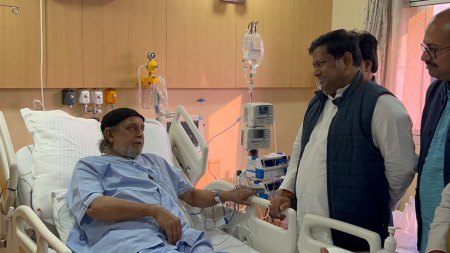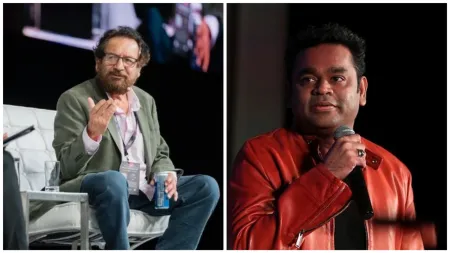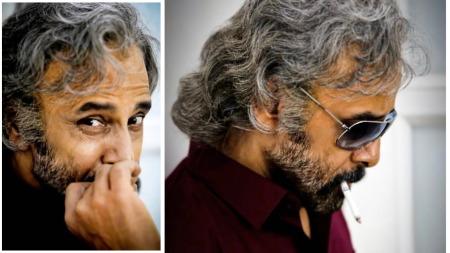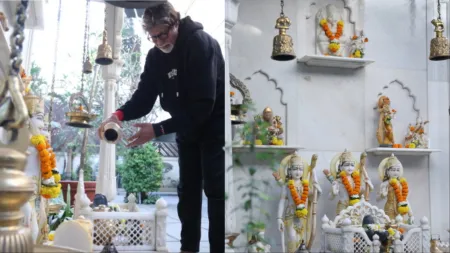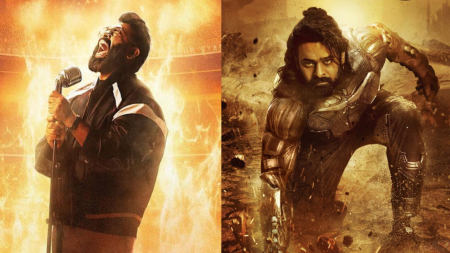Pran’s name may not kindle immediate connect for today’s cine lovers, but there is a generation which feared the worst for their favourite heroes when they were pitched against him on the 70mm screen. The thespian belonged to the age when heroism and villainy were clearly defined in Hindi cinema. He was arguably the most dreaded villain that Hindi cinema has ever seen. Filmmaker Hrishikesh Mukherjee expressed the emotions of many about Pran in his film Guddi. Jaya Bachchan’s character Guddi, a Dharmendra fan girl, sees the bad guy of Bollywood warmly meeting her favourite star on a film set. But she takes his warm gesture as a masquerade and warns Dharmendra against befriending Pran as he might have evil motives.
But Pran didn’t start as one of the star attractions in the gallery of rogues. The 19-year-old him, who was passionate about still photography and was employed as an assistant to a photographer in Lahore before Partition, never had plans to get into acting. But one night in 1939, destiny had different plans for him as mere chewing of ‘paan’ with some “sort of menace” while standing at a shop attracted writer Wali Mohammed Wali who was working with filmmaker Dalsukh M Pancholi for his Punjabi film Yamla Jat.

Initially hesitant to take up the Rs. 50 job while he was already being paid Rs. 200 for working with a photographer, Pran took the plunge and Hindi cinema got its best bad guy. As Amitabh Bachchan wrote after the legend’s demise in 2013: “We don’t make the likes of them anymore…”
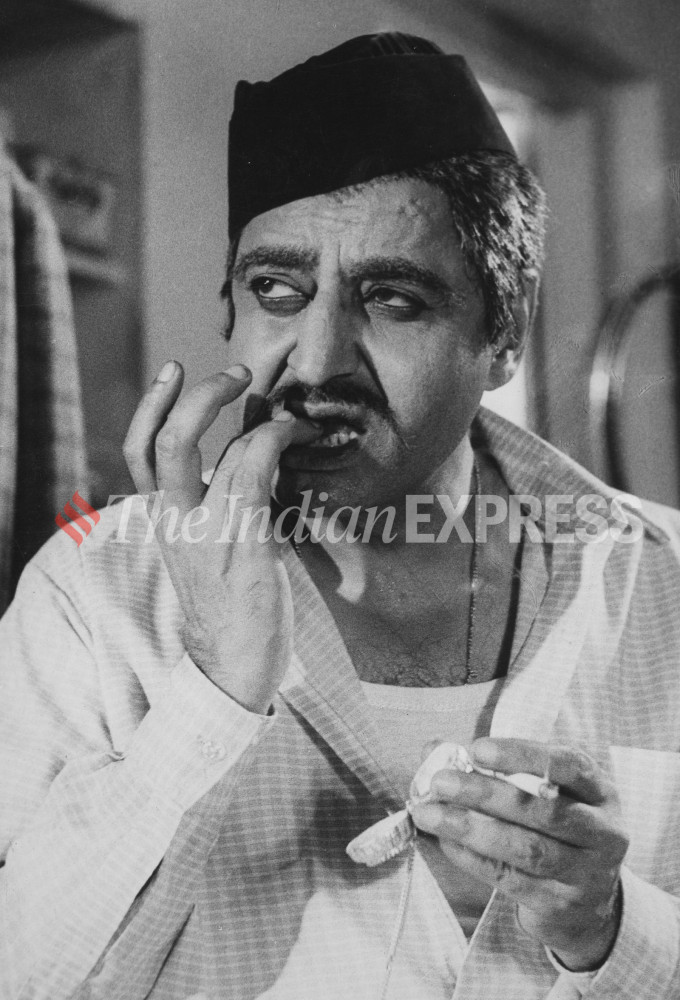 Pran had a successful career in films in Lahore before the partition of India. (Express archive photo)
Pran had a successful career in films in Lahore before the partition of India. (Express archive photo)
Yamla Jat (1940), also starring Durga Khote and Noor Jehan as a child artiste, became a huge success and Pran got noticed for on-screen villainy, though he found his role “bit silly”. He started getting several film offers but he propelled after his Hindi film debut with Khandaan (1942), a film where he played a romantic hero opposite Noorjehan. Though the film was a silver jubilee hit, Pran didn’t like running around the trees that a hero’s role usually entailed.
Also read | When Pran had to sell his wife’s jewellery to survive after working in 20 films: ‘Bahut dhakke khane pade’
“I didn’t like myself in the songs. So, I decided to take such films in which there were either no songs or where there were fewer songs to be picturised on me. Besides, running around the trees after my heroine was something I was never comfortable with,” the actor shared in his biography. This became the reason that he opted for villainous roles instead of positive characters later in his career. In one of his interviews, the actor quoted another reason for preferring villains over hero: “With the exception of some roles, all heroes look the same. And it is the villain that brings out the hero. Unless you know the evil, how will you know the good? It is because of Kansa that we know of Krishna, it is because of Ravana that we know of Ram.”
After Khandaan, Pran did six more films, all of them hits, before he went to meet his father Lala Keval Krishen Sikand, a civil engineer, in Delhi, where he was born. His father disapproved of his choice of career and got him a job at a friend’s factory. He also set his wedding with Shukla Ahluwalia, a girl with a good background, to keep him ‘on track’. Unfortunately, before he could see his ‘favourite’ child, of the seven, married, he passed away in 1944 from a heart attack. Deeply affected by the loss, Pran kept the promise his father made to the girl’s family and married Shukla in 1945. He returned to acting after his father’s demise and moved back to Lahore with his wife. ‘Lady Luck’ worked for the actor and from 1945 to 1947, Pran’s film career in Lahore flourished.
 Dharmendra and Pran in Guddi.
Dharmendra and Pran in Guddi.
However, riots and communal conspiracies right before independence forced Pran to shift to Bombay (now Mumbai) in 1947. In Bombay, however, the roles seemed to have dried up. His 20-film experience in Lahore didn’t count. The only response he got from various film studios was, “Sorry, nothing for now.” Reminiscing his early days in the ‘city of dreams’, Pran once told Rediff, “Yahan toh bahut dhakke khaane pade (It was a tough time here). I had no work here for more than six months.”
Pran, who was staying at the Taj Hotel with his wife and a son, started to run out of money, leading to them moving to cheaper hotels and eventually to a guest house. There also came the dire time when the actor had to sell his wife’s gold bangles to pay the tariff of a hotel. The actor “cursed” God for “inflicting such humiliation” on the family and questioned the “divine justice.” Little did he know he was soon going to be the most sought after villain of Bollywood.
Also read | Amrish Puri: Dismissed for his ‘harsh face’ early in career, Bollywood’s favourite baddie was called ‘the best world has ever produced’ by Steven Spielberg
Famous writer Saadat Hasan Manto, who was working with Bombay Talkies and considered Pran a “handsome man”, recommended him to film director Sayeed Latif, who cast him in the film Ziddi (1949) along with Dev Anand and Kamini Kaushal. “I was lucky to receive a substantial character in Ziddi with positive as well as negative shades,” Pran once told The Hindu. The film, as the actor said, gave him the “career of a villain” as it “hit the bull’s eye.” Since then the actor’s performances did not go unmarked among cinephiles and filmmakers. Producers started queueing up to work with him. There was an endless flow of filmmakers waiting to sign him at any cost, even if it meant paying him more than the film’s hero. He charged Rs 100 more than the film’s lead hero for Prabhat Pictures’ Aparadhi. Pran had five-six film releases each year, with the numbers steadily increasing as the years went on.
Pran knew the golden rule of surviving an ever-competitive film industry where an actor’s fate changes every Friday: “If an actor keeps repeating his mannerisms and keeps looking the same in all films, he is not likely to go far.” So, he donned a different look, costume and make-up in every film. His son Sunil Sikand, who was assistant director on Dharam Veer and Amar Akbar Anthony, told The Hindu, “For him, make-up was an integral part of acting. We would work extra hard with the make-up man to design his look.”
Pran himself was a keen observer of people around him and drew inspiration for his looks from them. Even world-famous personalities “fascinated” him. In Nigahen (1989) he used a beard which was exactly like the one Rajiv Gandhi’s associate, Sam Pitroda, sports. In a 1989 interview with Cineblitz, he shared, “When I did Halaku, Meena Kumari was not exactly pleased that a villain was playing the title role. But when she saw me dressed up like him, she was very impressed. In Jugnu, I was playing a professor and I copied Mujibur Rehman’s get up – the wig, the glasses, the moustache. Though the viewers noticed a familiarity, they could not pinpoint the man I had copied. In B.Subhash’s film I took Abraham Lincoln’s get-up.”
 Pran was a master of getting into the skin of his character. (Express archive photo)
Pran was a master of getting into the skin of his character. (Express archive photo)
Besides his looks, the actor also put effort in developing his character. “In Jis Desh Mein Ganga Beheti Hai (1960) even though I was playing a dacoit I spoke slowly, walked slowly and kept running my finger round my neck. Because I felt a dacoit would subconsciously, always think of a rope around his neck,” he told Cineblitz.
With his bloodshot eyes, his cold voice and his trademark sneer, he established his image as a villain and made films such as Devdas (1955), Azaad (1955), Halaku (1956) and Madhumati (1958) memorable. Pran’s reputation as a villain followed him to the extent that parents stopped naming their children Pran. “His name was synonymous with villainy. The name Pran was compartmentalised to only one man and that was Pran sahab,” noted Tinnu Anand, the film director who directed him in Kaalia (1980), during an interview with India TV.
Also read | Sharmila Tagore: Satyajit Ray’s rare find was dismissed from school for being ‘bad influence’, defied threats of bullets to marry outside her faith
The darkness of his varied personae even made his female co-actors fear him. Hema Malini once said, “Pran ji ke saath vaise bhi merko darr lagta tha (I used to be scared of Pran Ji) because of the way he performed. He used to look at you in a peculiar way with one raised eyebrow.”
But Aruna Irani, whose opinion of Pran was also painted by the celluloid, realised after working with him that he was the “nicest man on the Earth”. She once narrated to Stardust that she was returning to Mumbai from Hong Kong with Pran as both of them had finished the shoot early.
 Actor Pran with wife Shukla Sikand. (Express archive photo)
Actor Pran with wife Shukla Sikand. (Express archive photo)
“Our flight from Hong Kong was delayed and therefore we missed the connecting flight from Calcutta. We had no choice but to spend a night at a hotel and I was terrified at the thought. I was sure Pranji would rape me. Once we reached the hotel, he dropped me to my room and said, ‘Lock your door from inside. I am in the next room. If anybody knocks on the door, don’t open it… Inform me on the phone’. I was so touched that he had turned out to be such a gentleman. Now that I know him, I just adore that man. You can put him at the top of the list in the whole industry,” recounted Aruna. Seasoned director Lekh Tandon and legendary actor-director Manoj Kumar held similar views as they also called the villain, “one of the finest human beings”.
Pran’s career graph moved upwards by leaps and bounds after Manoj Kumar offered him the role of a war veteran bitter about the state of the country in his film Upkar (1967), against the wish of his well-wishers. Music composer Kalyanji also didn’t want his song ‘Kasme vaade pyaar wafa sab…’ to be picturised on him. But Pran aced the role and the audience felt his pain when he sang ‘Duniya vale tera ban ke, tera hi dil todenge…’”
“Having watched his films since the 1940s, I was convinced of his versatility,” Kumar said about Pran. Upkar was a hit and Pran was soon back in demand, this time as a character actor. He went on to do memorable roles such as Sher Khan in Zanjeer, Rana in Victoria No 203 (1972) and Jasjit in Don (1978), among others. Salim Khan, the scriptwriter, had once revealed that Zanjeer was sold to the distributors on Pran’s credibility as Amitabh Bachchan was a relatively new actor then. “To have him as a part of their film’s cast, even as a villain, was considered an asset by producers and directors,” Khan told The Indian Express.
 Film star Manoj Kumar, Pran and Kamini Kaushal during a shooting of film UPKAR. Express archive photo
Film star Manoj Kumar, Pran and Kamini Kaushal during a shooting of film UPKAR. Express archive photo
While the audience loved to hate Pran, filmmakers loved him not only because of his talent but also because of his dedication and sincerity towards his work. Manoj Kumar recalled in an interview with The Hindu that during Upkar’s shoot one afternoon, he found Pran looking tired, seated quietly in his chair. Upon asking, Pran told Kumar he had lost his sister the previous night. She was in Calcutta. “He did not go there,” said Kumar, “because the two producers who would have suffered heavy losses due to his absence.”
Shatrughan Sinha, while speaking at an event, said, “Subhash Ghai had a problem with two people during the making of the film Vishwanath, one was Shatrughan Sinha and the other was Pran. He used to say I am tired of telling Shatrughan Sinha to come on time, to report for the 10 am shift at 10 am and I am tired of telling Pran to not come at 9.30 am as he is not required before 2 pm.”
Also read |Shabana Azmi: The ‘hypersensitive’ child who sold coffee at petrol pumps, went on to win 5 National Awards
Aruna Irani also once provided testimony of Pran’s willingness to help actors in need. Without naming the ‘legendary actor’ he helped, she told India TV, “I won’t name him, but that actor faced such bad times that he lost all he had. Pran bore his lodging, food and lawyer’s expenses. But did you ever hear from him that he helped that man? Never. This is what you call greatness.”
Even after becoming a sought-after actor, Pran didn’t fear standing up for the right. In 1973, he was awarded the Filmfare Award for Best Supporting Actor for Sohanlal Kanwar’s Be-Imaan. But the actor refused to accept the award because he felt the jury was unfair in giving the Best Music Director award to Shankar Jaikishan for Be-Imaan and not to Ghulam Mohammed for his outstanding score in Pakeezah.
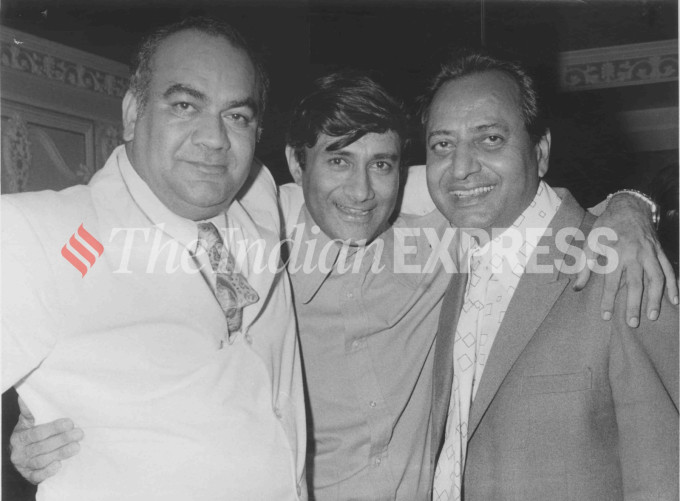 Film star Premnath, Dev Anand and Pran at the Silver Jubilee function of film Johny Mera Naam.
Film star Premnath, Dev Anand and Pran at the Silver Jubilee function of film Johny Mera Naam.
From the 1940s till the late 1990s, Pran stayed dedicated to his craft tirelessly. But in the sixth decade of his career, it became difficult for the actor to showcase the same agility, and he decided to accept fewer roles. One of the final films in which Pran acted was Amitabh Bachchan Corporation Ltd.’s Tere Mere Sapne (1996).
The actor, who acted in over 350 films, died aged 93 in 2013, with a wish (as told to Bombay Times), “To be an actor in my next birth. One life isn’t enough to serve this art”. He advised younger actors, “You may be a part of a rat race and cat fight, but remember to make your own life complete and fulfilling. Try to do the right thing at the right time.”
Click for more updates and latest Bollywood news along with Entertainment updates. Also get latest news and top headlines from India and around the world at The Indian Express.
Disclaimer: The copyright of this article belongs to the original author. Reposting this article is solely for the purpose of information dissemination and does not constitute any investment advice. If there is any infringement, please contact us immediately. We will make corrections or deletions as necessary. Thank you.
